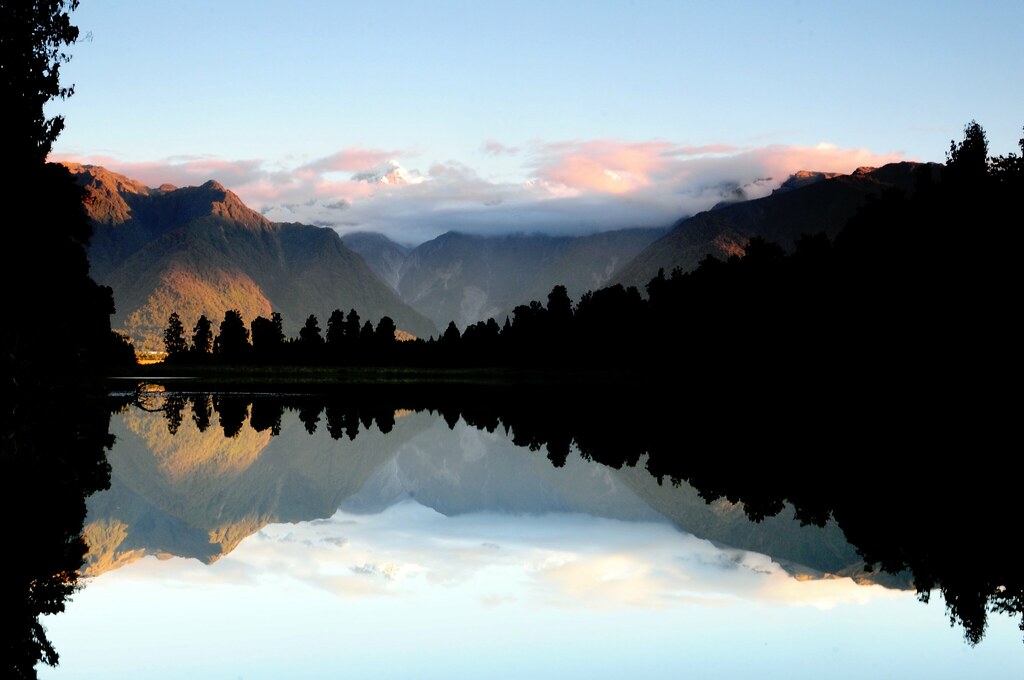Although there are a number of breathtaking scenic destinations in New Zealand, few can compare to the stunning Tasman Glacier and Tasman Lake. The glacier is the longest in New Zealand at 27 kilometres, and it flows toward the Mackenzie Basin in the Southern Alps of the South Island. Over time, the melting of this glacier as well as that of nearby Murchison Glacier have combined to result in what is now known as Tasman Lake. To see these brilliant natural landmarks for yourself, you can drive by car from the city of Christchurch, which is roughly five hours away. If you would prefer to take a tour of the glacier and lake, Mount Cook Village is just minutes away, and several bus, boat and helicopter tours depart daily during the summer.
The Impact of Global Warming on the Tasman Glacier and Lake
Although today you rarely hear the Tasman Glacier mentioned without the addition of the word “lake,” this wasn’t always the case. To the astonishment of many visitors, the enormous Tasman Lake, which measures in at more than two kilometres squared in terms of surface area, didn’t exist a mere thirty or forty years ago. As recently as 1973, explorers and researchers in the area never mentioned a lake, and there were merely a few small ponds that were deemed to be seasonal glacial runoff. By the 1990s, however, these ponds had joined, and the Tasman Lake was born.
To sightseers eager for a boat tour and the chance to view the Tasman Glacier up close, the existence of the lake could be seen as a good thing. In reality, however, the emergence of the lake is far from positive, and it spells disaster for the glacier’s future. The Tasman Glacier is melting due to increased temperatures associated with global warming, and the process is speeding up. As the lake grows in size, more of the glacier is in contact with the water. This warms the glacier at an ever faster rate. Parts of the glacial cliff have even fallen off in chunks into the lake, changing the geographic terrain of the region forever. Current estimates believe that the lake will be at its maximum point by 2030.
Maori Heritage and Legends Connected to the Areas
Mount Cook is the tallest mountain in New Zealand’s Southern Alps, and it is situated next to the Tasman Glacier. Maori legend has it that the glacier and the mountain are combined, and they call it Aoraki, which translates to ‘cloud piercer’ in English. Legend has it that Aoraki was a boy born of a father, the sky, and a mother, the Earth. While Aoraki was in a canoe with his brothers, the boat became stuck in the reef. The boys tilted the canoe, but they were turned into stone in that position by the wind. Their shapes formed the mountains of the Southern Alps, and Aoraki was the tallest. Mount Cook was officially the name of the peak since the seventeenth century, and the title was given to honour James Cook, despite Abel Tasman being the first to explore the area. In recent years, however, the official name has been changed to Aoraki/Mount Cook in order to honour and respect local Maori beliefs.
Exploring Aoraki/Mount Cook
Although the main attraction in the area is typically the Tasman Glacier and Lake, there is a lot to do in the area. One of the most popular pastimes within the Aoraki Mount Cook National Park is walking, and there are dozens of scenic trails begging to be explored. One of the most interesting walks within the park is the trek through Ball Pass. Not for the casual walker, this is a serious endeavour that is best attempted with the help of a guide. If you’re willing to put in the effort, however, you will be rewarded by some of the best views in New Zealand’s South Island. If you prefer to see the glaciers from the water, there are boat tours that proceed right into the Tasman Lake, and you can go kayaking in the nearby waters at the base of the slightly smaller Mueller Glacier. The Sir Edmund Hillary Alpine Centre in Mount Cook Village is a popular attraction for children as well as adults, and it includes a 3D cinema, a planetarium, and hands-on exhibits in the fascinating museum.
Nearby Skiing Opportunities
One of the activities that Aoraki/Mount Cook is best known for is skiing during the winter months. Believe it or not, you can even ski the Tasman Glacier itself. The angle of the run is not terribly steep, and the distance is long, so you can only access it by air. Several tours offer visitors the opportunity to be dropped off at the top of the glacier with a guide in the morning and be picked up hours later. These tours also bring you to skiing destinations like the nearby Liebig Ranges. If you would prefer something more affordable, skiing is also enjoyable from several huts within the state park, and this allows you to stay overnight and ski for several days.
The Tasman Glacier is a historically significant landmark in New Zealand, and its slow melting into the Tasman Lake is also of scientific and geological importance. Picking up a car for rent in New Zealand can give visitors the flexibility of exploring the area on their own and seeing history in the making.

